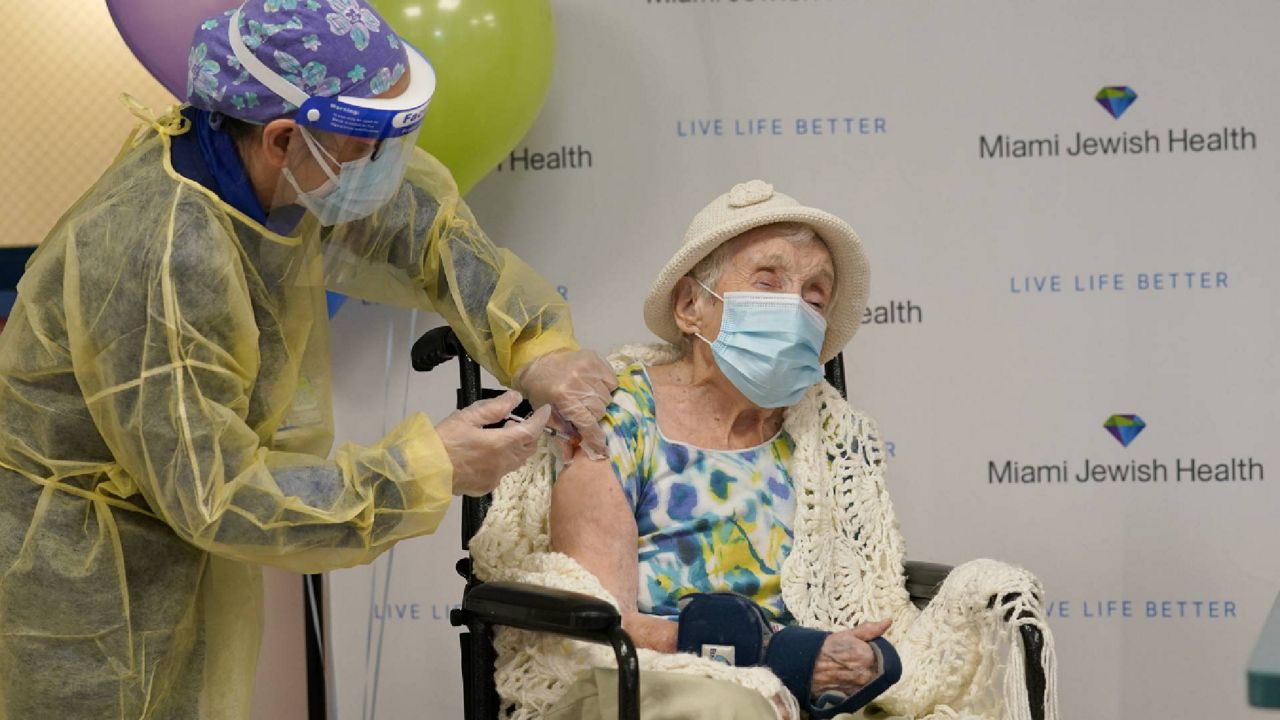The United States will likely not have 20 million Americans vaccinated by the end of the year, despite repeated estimates from top health officials that the country would reach that number before 2021 and then increase the number of vaccinations in the months to follow.
In fact, states have vaccinated less than a quarter of the predicted number, or 2.1 million people. Officials say that number could be an undercount, since states can report administered doses up to three days later, but it’s still clear that the U.S. won’t reach 20 million vaccinations by Friday.
“We certainly are not at the numbers we wanted to be at the end of December,” Dr. Anthony Fauci, director of the National Institute of Allergy and Infectious Diseases, said in an interview with CNN Tuesday.
Health and Human Services Secretary Alex Azar and other officials working on the vaccine have said they expect to vaccinate even more people — 30 million — in January and another 50 million in February. Now, it’s likely that states will have to catch up on December’s goal while trying to reach the next months’ thresholds.
“I believe that, as we get into January, we are going to see an increase in the momentum … which I hope allows us to catch up to the projected pace,” Dr. Fauci told CNN Tuesday.
Department of Health and Human Services officials said they still plan to allocate nearly 20 million doses by the end of the year, which includes another 4.2 million doses ready to be shipped next week.
Michael Pratt, a spokesperson for Operation Warp Speed, partly attributed the lower number of vaccinations to delays in reporting to the CDC.
"There is an expected lag between shots going into arms and the data being reported," Pratt said in a statement to Spectrum News.
"These doses are being distributed at states’ direction to the American people as quickly as they are available and releasable, and the rapid availability and distribution of so many doses ... is a testament to the success of Operation Warp Speed," he added.
Shortfalls in the number of vaccine doses available and the fact that distribution is up to individual states and health departments have together contributed to the lower number of vaccinations.
Earlier this month, General Gustave Perna, who oversees vaccine distribution for Operation Warp Speed, apologized for the lower number of doses shipped out in the initial wave.
“It was my fault,” he said. “I had to lower the allocations to meet the releasable doses that were presented to me.”
“So to the governors [and] the governor’s staffs: please accept my personal apology if this was disruptive in your decision-making,” he added.
Operation Warp Speed had originally promised more than 6 million doses of the Pfizer vaccine and more than 12 million of Moderna’s vaccine in the initial wave of distribution. But the first shipments of each vaccine ended up being less than half of those predictions.
So far, federal health officials have allocated nearly 11.5 million doses of the vaccine. But when and how those doses are administered to people is up to each state and often left to county health departments.
General Perna has long emphasized that distribution is left to state and local health officials, and he said that states have worked to develop plans in coordination with federal officials since the spring.
“The states know their people, their populations the best,” he said earlier this month. “Our responsibility is to enable, to empower their plan.”
But how health departments distribute the vaccine has varied widely from state to state and even from county to county.
In Florida, the Lee County Health Department, which includes Fort Myers, is offering vaccines to people over 65 and frontline workers on a “first come first serve” basis. Long lines formed Tuesday as people hoped to score one of the few hundred vaccines allocated to a handful of locations in the area. They were at capacity before 9 a.m.
But in the nearby Manatee County, people over 65 could register for an appointment online instead. Available slots filled up in less than an hour.
Nationally, health officials still hope to have 100 million Americans vaccinated by March 1, accounting for the country’s most vulnerable populations. But reaching that goal will require states to administer doses at a much quicker pace over the next few months as federal officials continue to increase the number of doses shipped out each week.



